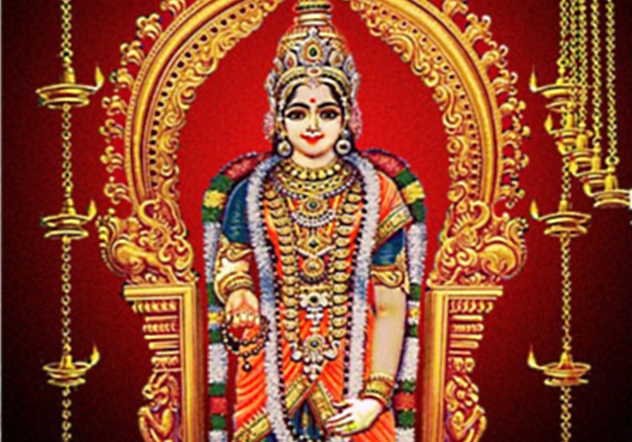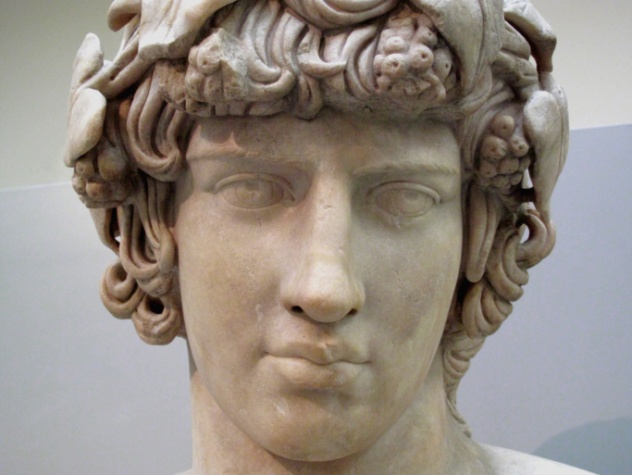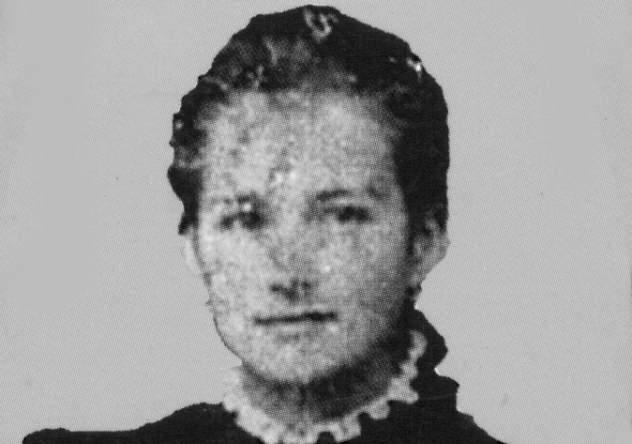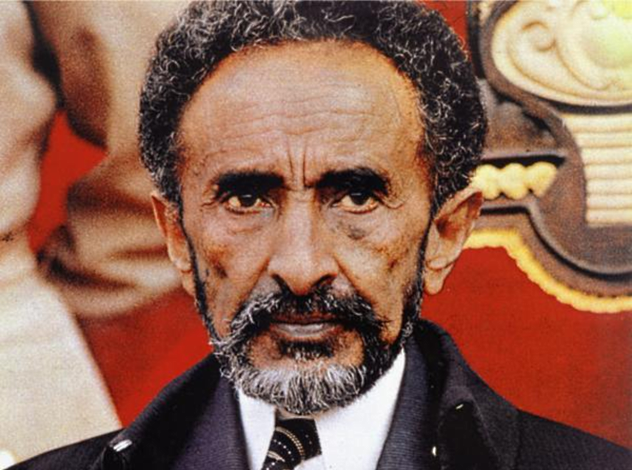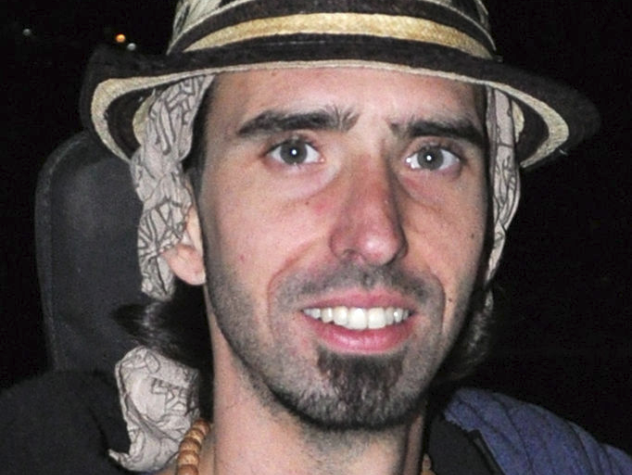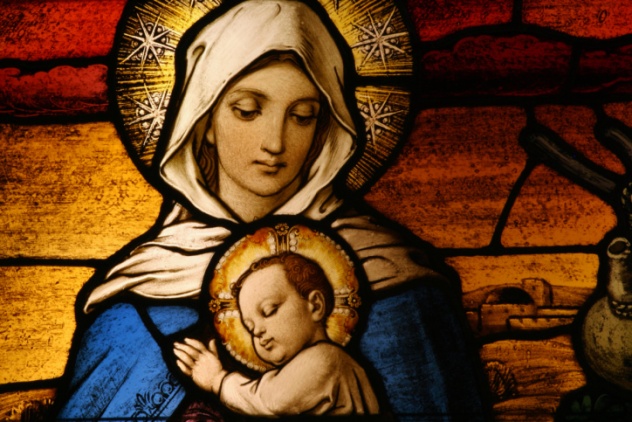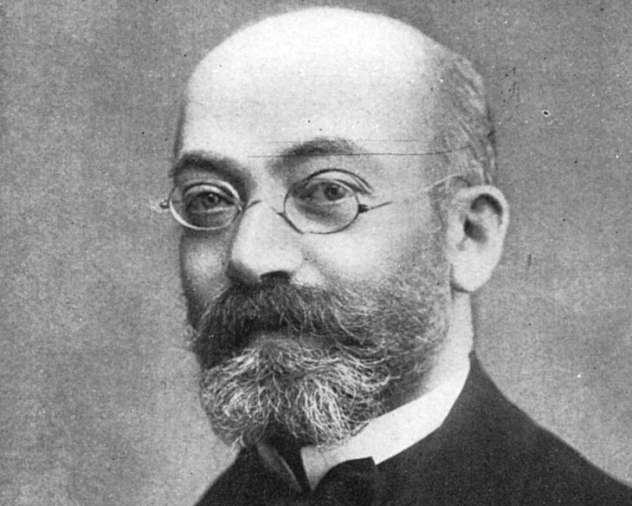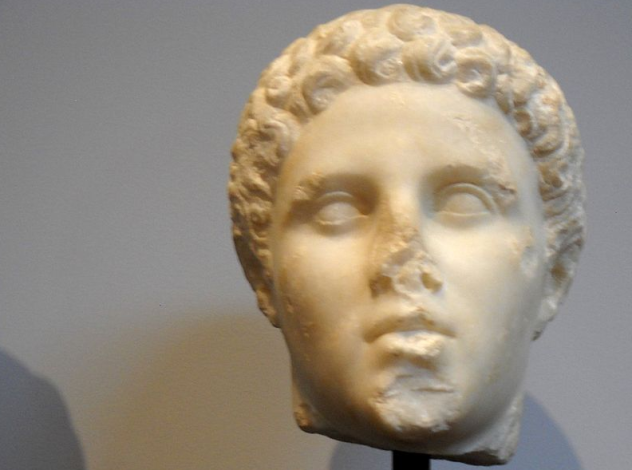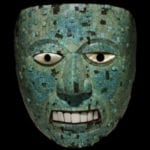10 The Kumari Devi
The Kumari Devi, a young Nepalese girl who is recognized and worshiped as the Hindu goddess Durga, isn’t a goddess forever—only until she reaches puberty. Only one girl at a time holds this title. Many are little older than toddlers when they’re selected, and when they reach puberty, their status is transferred to another. There are a couple of different stories about how Durga’s mortal incarnations began, including one in which the goddess visits a king and become furious when he makes some rather inappropriate comments to her. She tells him to find a child from a certain caste, the goldsmiths and the silversmiths, for her to inhabit and be worshiped in. It’s a pretty powerful story, and until the dissolving of Nepal’s monarchy, even the king would worship her. Today, the president does the same. A lot of what goes on around the life a girl while she’s Kumari is a trade secret. She almost never leaves her home, and when she does, her feet can’t touch the ground. Her face is always painted, she’s always exquisitely dressed, and the girls that are selected go through rigorous testing to prove that the spirit of the goddess is within them. According to the legend, there are 32 characteristics that the girls must have. They include having “eyelashes like a cow” and skin that’s free of blemishes. Those that are selected go through an initiation and are expected to behave as a goddess would. There are many stories about what goes on in the initiations, including having the girls sit amid decapitated animal heads while men in masks try to terrify her, but what actually goes on is a closely guarded secret. That secrecy is one of the reasons that the girls are said to transfer their goddess soul upon reaching puberty. It would be unseemly for anyone to be attracted to them, and they’re more likely to want to give away the secrets. So what’s it like for the ex-goddesses? Challenging. According to Chanira Bajracharya, who was 15 when she gave her powers and status to another, she faced some serious obstacles. Her parents needed to teach her how to walk properly, and although she had kept up with her education while she was cloistered in her home, she was suddenly going to public school with children who knew her as a goddess and called her an alien.
9 Jiddu Krishnamurti
Charles Leadbeater and Annie Besant were devoted followers of the London Theosophical Society, and while they would author some pretty strange books, they would also recruit the Theosophist symbol of divinity in the form of a 14-year-old boy named Jiddu Krishnamurti. Krishnamurti was playing on a beach in his native India when Leadbeater found him. Leadbeater, who was, of course, clairvoyant, claimed that he saw the boy’s true self, the future incarnation of Lord Maitreya. Lord Maitreya is most commonly a Buddhist term for a future incarnation of Buddha, but over the centuries, it’s become something of a catch-all term for divine incarnations. While the Buddhists believe that he will return with the most pure interpretations of the Buddha’s works and teachings, others have drawn parallels between Maitreya and the Antichrist. For the Theosophists, he’s Christ and the world’s teacher. Krishnamurti was declared the incarnation of Lord Maitreya in 1909, and he was also made the head of an organization called the Order of the Star in the East. He amassed a huge following and was incredibly popular. However, in 1929, he dissolved the organization, denied that he was Lord Maitreya, and returned everything that the faithful had donated to the cause. He didn’t disappear, though. Instead, he toured the world, not as the divine creature Leadbeater and Besant had seen, but as a passionate speaker and advocate for change. Contrary to their desires, he made it a point not to affiliate with any country, religion, or organization, saying that it was those labels that separated mankind and caused conflict. Instead, he stressed how people aren’t first identified as Christian, Muslin, American, or as a member of any one of thousands of organizations. They’re human first.
8 Antinous
The deification of the Roman Antinous is a strange case, one that seems to have happened in a sort of grand, sweeping movement across an empire that was joining their emperor in mourning. Hadrian’s official wife was Vibia Sabina, and there are many, many images of her, as befitting an empress. But Hadrian’s true love was another man, named Antinous. In AD 130, Hadrian and his entourage were visiting Egypt, and Antinous drowned in the River Nile. Hadrian was devastated, founding a nearby city, naming it Antinoopolis in the boy’s memory, building him a temple, and establishing a festival. Hadrian made it quite, quite clear that anyone who wanted to worship his beloved as a god was more than welcome to do so, without even bothering to go to the Senate to make an official pronouncement of deification. The circumstances of Antinous’s death have been up for considerable debate, as he died on October 24, the same day as an annual festival that includes a ritual concerning the death and rebirth of the god Osiris. According to the grief-stricken Hadrian, it was an accident. According to contemporary historians, though, it was anything but. Various theories have been put forth, including the idea that Antinous committed suicide for Hadrian or that the emperor was trying to perform some sort of ritual which would prolong his own life. An epitaph, inscribed on the Pincian Obelisk, gives some credibility to the idea that Antinous was a willing participant in his own death. However he died, and whatever Hadrian’s true motive for deifying him was, his cult spread, and the city that had been named for him thrived. Residents of the city were given some rather nice perks, such as being exempt from paying taxes on slaves and land, and imperial funds could be used to support children. A Greek revival throughout the empire was attempted in Antinous’s name, and while that might not have been as widespread as first expected, the cult was a hit. Antinous was linked with Dionysus, as well as with the Egyptian gods Thoth and Osiris.
7 Jacobina Maurer
Jacobina Maurer and her husband were a part of a group of German immigrants who settled in Brazil in the late 19th century. They had been looking for religious freedom, and they formed a group called the Muckers. As a child, Jacobina was already prone to suffering from epileptic seizures, periods of depression, and slipping into trance-like states. She eventually married Joao Jorge Maurer as a doctor-prescribed cure for all that ailed her. Her husband, well known as an entrepreneur, was soon doubling as the area’s doctor and administering herbal medicines and similar remedies. With the Maurers as the basis for the community, the Muckers were established. Many people were attracted by Jacobina’s impassioned preaching, Bible readings, and trances. It wasn’t long before she would fall into trances and emerge with deep, meaningful messages about the state of the world and, of course, the upcoming end of it. As a result, as far as the Muckers were concerned, she wasn’t just a preacher; she was the Second Coming of Christ. While there are no official records of her declaring herself Christ, the group began to withdraw from the rest of the community. They took their children out of schools, and they started attending their own church. When they closed their doors, they were also closing out a world that was completely, utterly foreign to them, a world of war and conflict. Needless to say, those living nearby took the whole thing as an insult and started a petition demanding that something be done about the weird little cult that was growing up around a proclaimed female Christ. Things went downhill quickly. Jacobina was arrested and hospitalized, but she was also declaring that her followers were her chosen and that they’d better defend her and themselves, with weapons if need be. They started collecting weapons and artillery and repelled the government’s attempts at storming their stronghold community. It didn’t take long for the government to regroup and attack again, after the mysterious death of Jacobina’s infant child. She was ultimately killed, along with the general in charge of the army contingent that had been tasked with breaking up the movement.
6 Haile Selassie I
According to the Rastafari, Haile Selassie I is the Second Coming. Born in Ethiopia, he was named Lij Ras Tafari. His early years were turbulent and he fled the country in the face of Italy’s 1935 occupation. Eventually, in 1941, the British helped him return to his country as its head, and within only a few years, he had abolished slavery and established a series of land reforms. It might seem pretty straightforward that the movement named for him started in his country, but it didn’t. It started in Jamaica, when activist Marcus Garvey had predicted the crowning of an emperor that would symbolize the Second Coming of Christ. Not long after, Selassie was crowned, making it clear to believers that they had found their Christ. It’s more than just a prophecy, though. According to believers, their evidence comes right from the Bible. They cite Jeremiah 8:21: “For the hurt of the daughter of my people am I hurt; I am black; as astonishment hath taken hold of me.” Throughout the history of Ethiopia, their emperors have always been referred to by divine-sounding titles. Those names, like “Conquering Lion of the Tribe of Judah,” were extended to Selassie. They also point to evidence of Selassie’s divinity in his treatment by other world leaders. When the king of England couldn’t meet with him, the duke of Gloucester went in his place. When the duke bowed to Selassie, it was clear how important—and divine—everyone thought he was. There’s also a pretty heartbreaking theory about Africa as heaven. During the centuries around the slave trade, many, many people were taken from their home and shipped all across the world, particularly to the Americas. That made the colonies nothing short of Hell on Earth, meaning that their original home, Africa, must be heaven. Therefore, it’s the logical place for Christ to come from.
5 Osel Hita Torres
Spanish Buddhist Maria Torres gave birth to her son, Osel, less than a year after the death of her mentor, the extremely well-liked and well-traveled Lama Yeshe. When he was only two years old, Osel was determined to be the reincarnation of the Lama. With approval from his parents, he was taken to a temple in India, where he seemed to confirm the spirit of the Lama was with him. He passed the tests, he picked out the dead man’s belongings, and he was enshrined in the monastery. Adults were looking to the toddler for his blessing, and Osel himself admits that growing up, he was a bit of a nightmare. That happens, though, when you give children their own set of special cutlery and enshrine them as the incarnation of a Lama. He had little to no contact with his parents or siblings, though they tried to at least live close to him. His father briefly tried moving to the monastery with him, bringing his brother along as well. As a teenager, Osel was already asking to return to Spain. Osel grew up in the faith and in the monastery, but by the time he was 18, he wanted out for sure. In spite of his disciples, in spite of the dreams others had of the reincarnated Lama, and in spite of his upbringing, he decided that he wanted to go to school, to return to Spain, and that he wanted to become a filmmaker. He left the monastery and returned to Spain, where, while he’s not sure whether or not he’s even Buddhist, the members of Lama Yeshe’s Foundation for the Preservation of the Mahayana Tradition still look to him for guidance. He gives it, occasionally, but it’s pretty generic stuff. He still talks about working with the organization that has been such a part of his—and his family’s—life, but he’s not sure if a spiritual role is right for him.
4 The Virgin Mary
The Catholic Church has made it quite clear just what the Virgin Mary’s role was. However, in the fourth and fifth centuries, there was a sect of people who elevated her well above her Mother of God role and into the realm of the divine. The Collyridians were denounced as completely heretical for their treatment of Mary not just as Mother, but as God. Little has survived of them, but we do know that one of the things that the young Church had against them was their use of sacrificial bread as an offering to Mary. The more mainstream Church denounced this as idolatry and a clear violation of one of the Ten Commandments, as Mary was being worshiped as a goddess above God. Most of what we do know about them comes from the writings of Epiphanius, who was absolutely maniacal in his attempts at stamping out every bit of religious interactions with icons, to the point where his fellow bishops became sick of him. Epiphanius wrote Panarion, in which he called out the horrors that were going on around him, including denouncing the Collyridians and their horrible, heretical, blasphemous ceremonies, which he saw as rooted in the pagan goddess cults. Most of the Collyridians were women, and they did horrible, nasty things like covering chairs with linen cloths and eating the bread that they offered in Mary’s name.
3 L.L. Zamenhof
Zamenhof is the mastermind of Esperanto, the most successful artificially created language in the world. Born in 1859 and dying in 1917, Zamenhof was very, very aware of the conflicts that had always existed between countries and people. When he was young, he realized that many of these conflicts were occurring across different languages. He created Esperanto as a universal language in the hopes that everyone would eventually speak it and that it would give the people of the world common ground upon which they could be united. Today, there are about two million people in the world who speak Esperanto and an estimated 1,000 people who are native speakers. There’s also a group of speakers who believe that Zamenhof is a god for bringing the language to the people of Earth. The Omoto people are a religious group in Japan, who follow teachings based on Shintoism. Their outlook on life, and the direction in which we should all be headed, is one that’s incredibly similar to the goals that Zamenhof had in mind when he created Esperanto. They believe that he has brought to Earth the language that is spoken in Heaven. Esperanto is a language of peace and unity, and as such, it’s divine. By extension, so is its creator. The Omoto hold regular festivals and present poetry readings, all in Esperanto. They translate their texts into Esperanto and include the man who created it in their worship.
2 Andre Matsoua
Matsoua’s life reads like something out of a graphic novel. Born in the Congo at the beginning of the 20th century, he originally studied to be a priest. In 1919, though, he ended up joining the army and fighting in northern Africa, before leaving and heading to Paris. There, he was instrumental in founding a pro-union organization called Amicale. His work was influential and started causing so much trouble in his native Congo that he was tracked down and arrested. In the years leading up to World War II, his story is a series of arrests, escapes, and exiles, until he joined up with the French army to fight in the war. After being wounded, he was arrested while in a hospital, was sentenced to hard labor, and was sent back to the Congo, where he died during his sentence. His influence was just getting started, though. Matsoua had a group of Lari followers who refused to believe the reports that he had died in prison. He couldn’t die, after all, because they believed he was a divine prophet who had been sent to stir them to revolution against their French colonial oppressors. Believing that it was only a matter of time before he was born again, the Lari masses began withdrawing their support from the French. They had such faith that Matsoua would return to claim his rightful place that they elected him to the French National Assembly twice. Eventually, a priest named Fulbert Youlou successfully convinced the Lari that he was the rightful heir to Matsoua’s reign and was voted into power. The most devoted of the Matsouanism movement have continued to oppose any kind of government decades after his death. By the 1990s, the movement didn’t exist soley to deify Matsoua, but they continued to respect him, acting as political activists in his name.
1 Hephaestion
Born in 356 BC, Hephaestion would grow up to be one of Alexander the Great’s most trusted bodyguards and most beloved friends. He would be remembered as Alexander’s second-in-command, often appearing beside him throughout his army’s seemingly never-ending advancement across the world. He died in October 324 BC, after developing a fever and severe illness on the heels of a drunken night out on the town. Alexander’s reaction was incredibly direct. He had the doctor who had failed to save his friend impaled on a stake, banned all music for a period of mourning, cut off his hair (and the manes and tails of all his army’s horses), made sacrifices, burned sacred fires, and declared a state-wide period of mourning. He also sent a formal request to Siwa, asking that Hephaestion be immortalized as a deity. The response was an odd one, and it’s long been debated on whether or not it was an acceptable one to Alexander. The oracle declined to make Hephaestion a god, but did permit the official establishment of a hero cult to worship him. He was a divine hero, rather than a god. It’s been suggested that the whole thing was something of a setup. While Alexander’s close relationship with Hephaestion isn’t disputed, it’s not certain whether or not he made the bid to deify his friend for his friend’s honor or to further his own bid for being declared a god. If his friend was deserving of a godhood, he certainly would have been, too. Even Hephaestion being awarded divine hero status seemed to perhaps lay the groundwork for Alexander’s own claim for divinity. Unfortunately, the information that we do have on the establishment of the divine in Greece and the protocols for worship are sketchy at best, so it’s all down to educated speculation at the end of the day. Read More: Twitter
